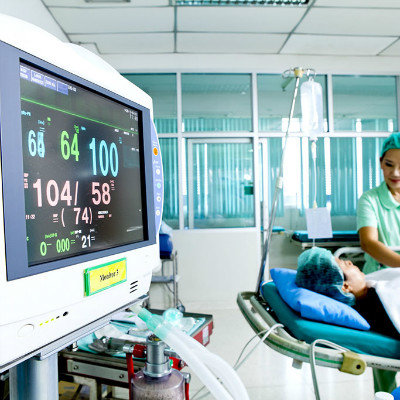The main symptom of pneumothorax?
summary
Pneumothorax refers to the gas into the pleural cavity, resulting in gas accumulation state, known as pneumothorax. Most of the patients suffered from lung disease or external force, which resulted in the rupture of lung tissue and visceral pleura, or the rupture of tiny emphysema near the surface of the lung, and the air in the lung and bronchus escaped into the pleural cavity. Traumatic pneumothorax is caused by chest wall or lung trauma; Spontaneous pneumothorax is caused by spontaneous rupture of lung tissue caused by disease, and artificial pneumothorax is caused by artificially injecting air into pleural cavity for treatment or diagnosis. Pneumothorax can be divided into closed pneumothorax, open pneumothorax and tension pneumothorax. Spontaneous pneumothorax is more common in young men or with chronic bronchitis, emphysema, tuberculosis. This disease is one of the acute diseases in the Department of lung. If it is serious, it can be life-threatening and can be cured by timely treatment. The main symptom of pneumothorax? Let's talk about it
The main symptom of pneumothorax?
The severity of symptoms depends on the speed of onset, the degree of lung compression and the condition of primary lung disease. The typical symptoms are sudden chest pain, followed by chest tightness and dyspnea, and irritating cough. This chest pain is often needle like or knife like and lasts for a short time. Irritative dry cough is caused by gas stimulation of pleura. Most patients with sudden onset, large pneumothorax, or with original lung lesions have obvious shortness of breath. Some patients have severe cough, forceful holding of breath and defecation or lifting heavy objects before pneumothorax, but many patients get sick during normal activities or quiet rest. In young healthy people, the moderate pneumothorax is rarely uncomfortable. Sometimes, the patient is only found during physical examination or routine chest fluoroscopy; And the elderly with emphysema, even if the lung compression is less than 10%, can also produce obvious dyspnea.

Patients often show a high degree of mental tension, fear, restlessness, shortness of breath, suffocation, cyanosis, sweating, and have weak and fast pulse, blood pressure drop, cold and wet skin and other shock states, and even unconsciousness, coma, if not timely rescue, often cause death. Pneumothorax patients generally have no fever, elevated white blood cell count or rapid ESR. If they have these manifestations, they often indicate the original pulmonary infection, such as tuberculous or suppurative inflammation, or complications, such as exudative pleurisy or empyema.

A few patients may have bilateral pneumothorax, with dyspnea as the prominent performance, followed by chest pain and cough. At the same time, we found that the incidence of bilateral metachronous spontaneous pneumothorax was 83.9%. Patients with mediastinal emphysema, dyspnea is more serious, often with obvious cyanosis. Hemopneumothorax is more rare when pleural adhesions or pleural vascular tears occur. If the amount of bleeding is large, it can be manifested as pale complexion, cold sweat, weak pulse, decreased blood pressure and other signs of shock. But most of the patients had only a small amount of bleeding.

matters needing attention
Patients with pneumothorax should rest absolutely in bed, fully inhale oxygen and speak as little as possible to reduce lung activity, which is conducive to gas absorption and lung recruitment. It is suitable for the first attack with lung collapse less than 20% without dyspnea.
















